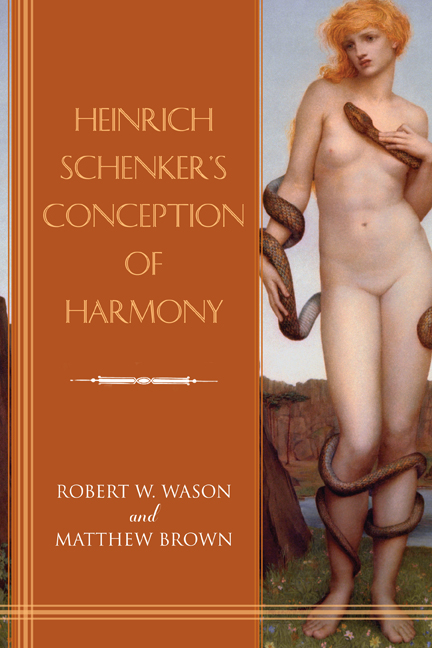Appendix A - “The Path to Likeness.” OC/83, 2–43
Published online by Cambridge University Press: 14 October 2020
Summary
Introduction
The problems with Schenker's essay “Der Weg zum Gleichniss” begin with the title. Just what is Gleichnis? The authoritative nineteenth-century German dictionary begun by the brothers Grimm (important linguists as well as compilers of fairy tales) provides a list of meanings that include the pictorial notion of image (Bild), symbol (the word is often used today to indicate “metaphor”), similarity (it can also mean “analogy”), example, and means of comparison. Schenker essentially invokes all of these, and thus choosing among them seems futile. For him, Gleichnis is both a process and a product. The meaning may be broad, but the purpose of the idea in Schenker's longer-range research plan is clear: firstly, it connects music to the arts as a whole via the mimetic theory: the arts “imitate”; music imitates (itself, as it turns out); therefore music is one of them; second, and more narrowly, Gleichnis includes “repetition” and all of its ramifications, a concept Schenker had already begun to explore in GEIST, and one which would become essential to the opening of HL. It is impossible to encapsulate all of this in one word. For practical reasons, we have elected to follow Bent, Marston and others and retain the neutral cognate, “likeness.”
The handwritten text of Schenker's essay itself presents the greatest difficulty. The only known copy, it has an extensive editorial overlay, and suffers from numerous passages that will continue to be controversial, or simply deemed illegible by even the most knowledgeable of readers. There exists one published transcription. While a pioneering and useful effort, it does have significant problems, and, as with any transcription—though especially in this case—it should be used in conjunction with a parallel reading of the original manuscript. Indeed, there may never be a “definitive” transcription, given the severity of the editorial problems.
Nonetheless, the transcription by Nicholas Marston comes close. Thus we are very much in his debt for allowing us to use this unpublished transcription in the preparation of the present translation. Certainly the expert on this manuscript, Marston has studied it over a long period of time, as is obvious from his transcription, and is the author of the recent prize-winning article on it.
- Type
- Chapter
- Information
- Heinrich Schenker's Conception of Harmony , pp. 397 - 424Publisher: Boydell & BrewerPrint publication year: 2020



